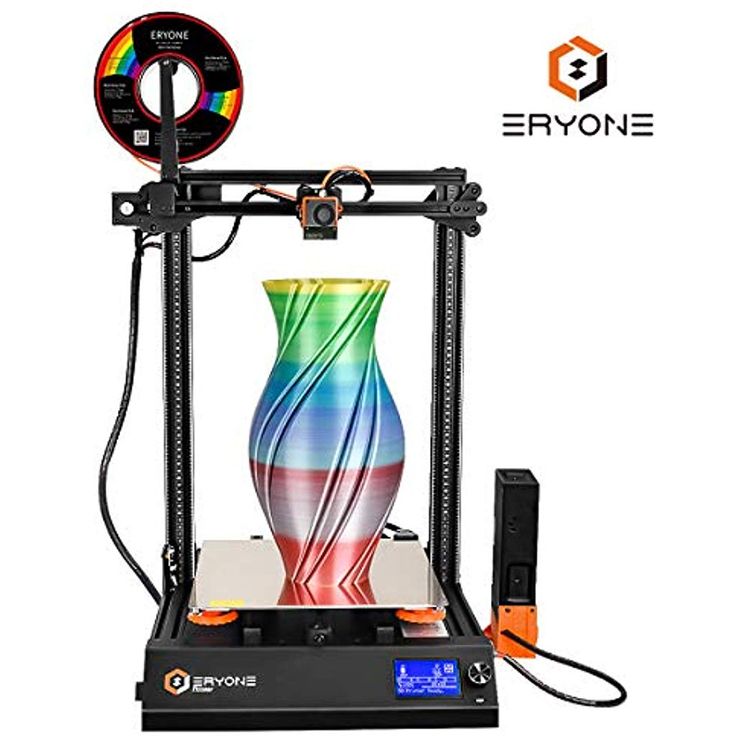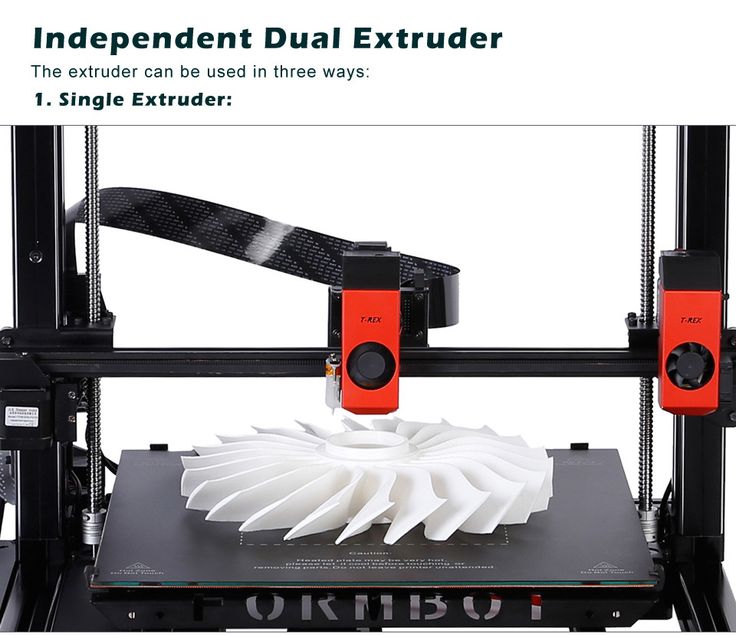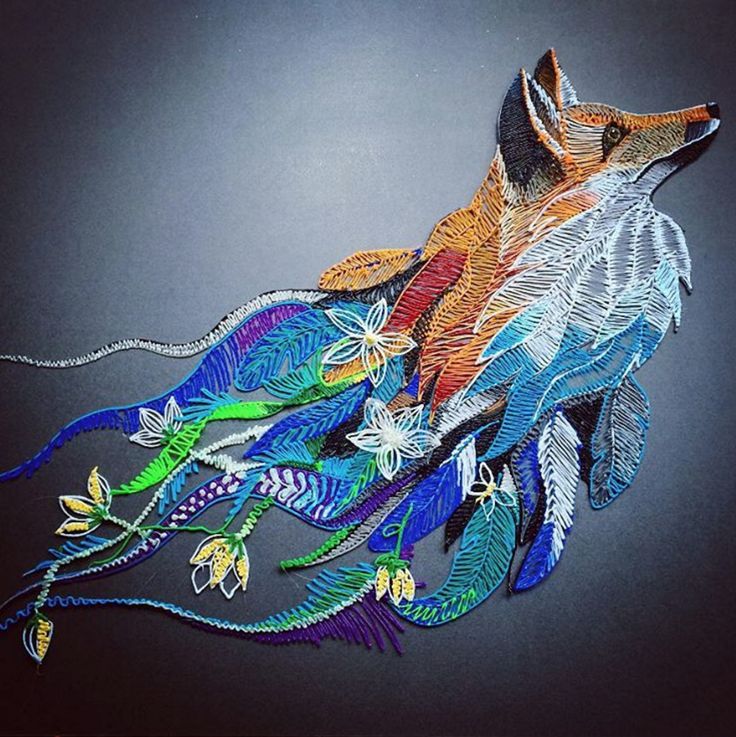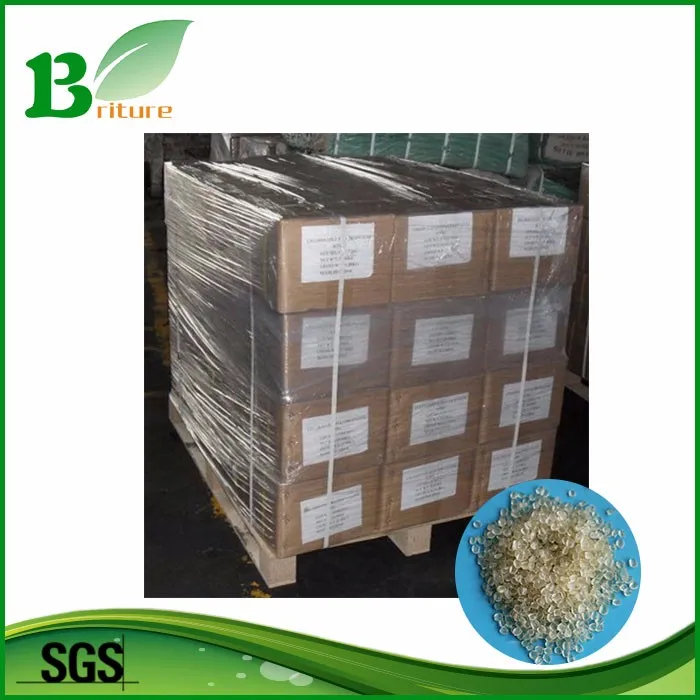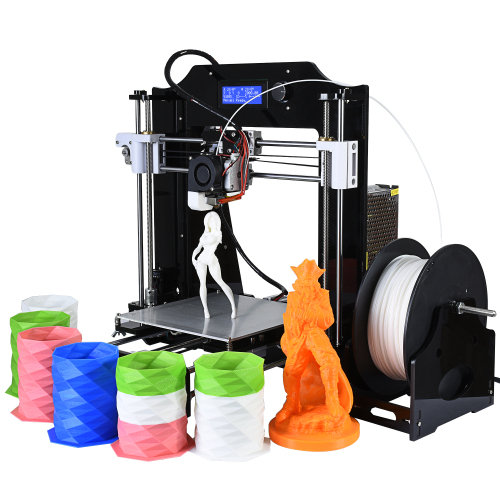Quiet 3d printers
The Best Quiet 3D Printers 2022 (& How To Reduce Noise)
If you’ve ever had a neighbor decide to try their hand at DIY at stupid o’clock in the morning, or been woken by roadworks outside your home, then you’ll know just how loud machines can get. Tools like jackhammers, drills, and lathes that create, destroy, and modify materials often make a significant amount of noise, in the same way that noisy 3D printers are the bane of late-night workers or fans of quiet.
With an average noise of around 50-60 decibels, or around the volume of someone trying to be heard over a TV, it’s easy to see why they can be a bit of a nuisance, especially for longer projects. Motors and fans can rack up a high decibel count even in less powerful machines.
And so, a lot of people have tried to find out how to make a 3D printer quieter.
We’ve already seen in cars and trains that once-noisy motors and machines can be made a lot quieter than they were, and engineers are always looking to make our technology less and less disruptive.
A quiet 3D printer isn’t a pipe dream anymore, and if you’ve used some noisier models before, you’ll be happy to know that some of the best quiet 3D printers are very affordable too. We’ll even look at ways to make your own machine a little more tolerable when in use.
3D Printer Noise: Why is it Bad?
A 3D printer’s noise isn’t normally a dealbreaker for most people. Compared to CNC routers, vacuum cleaners, and even older washing machines, they’re not so bad. The problem is how long the noise can go on for.
When vacuuming, you know when it’s going to end, and appliances like washing machines are easily ignored because they’re usually several rooms away (or in the basement if you’re lucky) and so don’t cause much disruption or irritation.
3D printers are more of a pain because of both their constant noise when in-use as well as the average user’s proximity to them. If you’re like me, then you have your 3D printer set up in your workspace for easy communication with your PC.
The whirring of a motor gets very annoying very quickly, like a car left running outside your bedroom window. Quite often, a quiet 3D printer is a popular 3D printer, and some of the quietest 3D printers are highly praised for their gratifyingly noiseless processes.
If you work late at night or have particularly sensitive neighbors, then you’re going to want to either find the quietest 3D printer you can or learn how to make your 3D printer quiet.
Best Quiet 3D Printers
If you’re in the market for a new 3D printer and prioritize silence, then you’ll find a lot of 3D printers on the market tend to brag about their noise reduction. But like every pizza place saying they’re the best, you can’t always trust the word of the manufacturer.
Here are some of our picks for the best quiet 3D printers that don’t skimp on overall quality for the sake of silence. Whether you work better at night or just appreciate the peace, you’ll want to take a look at these models.
3DSourced is reader-supported. When you buy through links on our site, we may earn an affiliate commission. Learn more
1. Creality Ender 3 V2 — Upgradable with silent mainboard for quiet 3D printing
- Price: $279 — Available at Creality Official store here / Amazon here
The Creality series of 3D printers are renowned for smooth, user-friendly printers and almost unparalleled affordability in the 3D printing market.
The Ender 3 V2 is one of the best quiet 3D printers around, though many have commented on how the fan is a lot more susceptible to wear over time than others, becoming almost uncomfortably noisy with fairly constant medium-term use.
Fortunately, the Ender series is well known for modifiability, especially the Ender 3, Ender 3 Pro, and Ender 3 V2.
Read more: comparing the Ender 3, V2, Pro and Max
You can reduce the 3D printer’s noise by upgrading it with a silent mainboard, like this one here, or hot end fan replacements like this.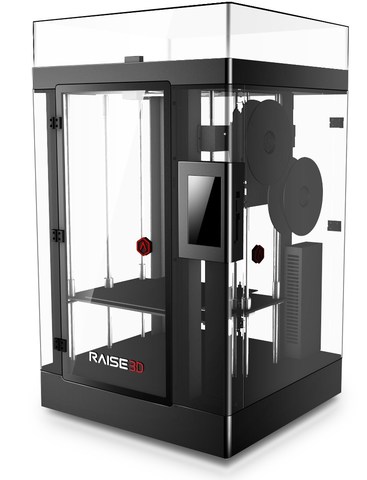
All-in-all, the Ender 3 series, especially the V2, are fairly quiet machines, but that’s not to say they’re silent 3D printers. What makes them some of the best quiet 3D printers around isn’t how they come out of the box, but how easy they are to silence with just a little bit of tweaking.
On this topic: our guide to Ender 3 upgrades
2. Artillery Sidewinder X1
- Price: $419 — Available on Amazon here
If you want true reliability in a quiet 3D printer, then the Artillery Sidewinder X1 is the choice for you. While it measures at around 55 decibels (the average for a 3D printer), it’s the best in terms of both volume and usability.
With two measures of fault detection in place, the Artillery X1 is incredibly safe and won’t ruin your prints in the event of overheating or a clog. It’s an incredibly quiet 3D printer for having an open build area and comes mostly pre-assembled.
3. Monoprice Voxel — one of the quietest low-cost 3D printers
- Price: $399 — Available on Amazon here
The Monoprice Voxel is often compared to the aforementioned Flashforge Adventurer 3. They have the same build size and are relatively similar in power.
They have the same build size and are relatively similar in power.
The Monoprice Voxel also operates between 45 and 50 decibels when in use, and is very reliable as a machine for beginners who want to know they’re getting a good quality machine that won’t need constant reviews of the instruction manual to work.
When it comes to maintenance and upgrades, the Monoprice has easily replaceable parts and a reliable WiFi connectivity option, meaning you can keep it in a different part of the house if the noise is still a little too much.
4. Flashforge Printers
- Flashforge Finder: $299 — Available at Flashforge here
- Flashforge Creator Pro 2: $699 — Available on at Flashforge here
- Flashforge Adventurer 3: $369 — Available at Flashforge here
Flashforge is a household name in 3D printing, and is known for its line of reliable, multi-purpose 3D printers that have found both personal and professional users all over the world.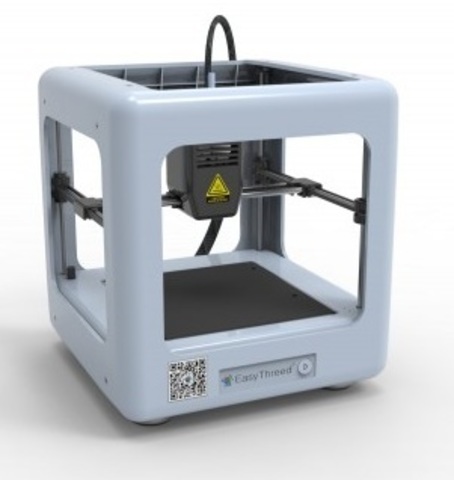
When it comes to quiet 3D printers, two of their models stand out amongst the crowd; the Creator Pro 2, and the Finder.
The Flashforge Finder is the most beginner-friendly 3D printer on this list. Fully assembled out of the box and very quick to set up, it’s an ideal choice for those of you who want a quiet 3D printer without needing modification or experience.
While advertised as ‘noiseless’, the Finder has a maximum volume of 50 decibels when working normally, which is fairly quiet as far as 3D printers go, but it can’t be considered a silent 3D printer.
For those of you who want a comparatively upgraded machine, the Flashforge Creator Pro 2 is a little noisier than the Finder (working at 55 decibels), but is a far more capable machine. The relatively quiet nature of the Creator Pro 2 is incredibly impressive when you take its hardware into consideration, which is capable of high-quality prints from a very easy-to-use machine.
As well as its fully enclosed build area, the all-metal frame of the Creator Pro 2 adds to its general sturdiness, significantly reducing the noise from vibrations.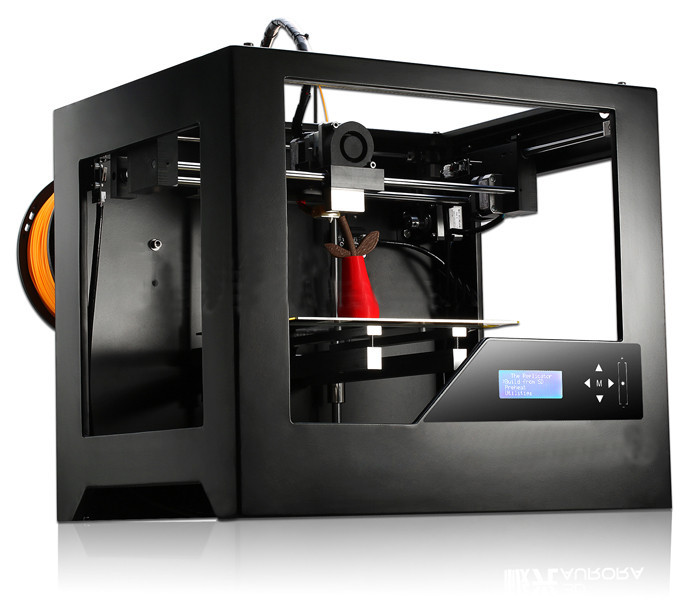
If both of these sound good to you, but silence is your main focus, then you might enjoy Flashforge’s middle-ground offering, the Adventurer 3. At only 45 decibels, it’s amazingly quiet for a 3D printer, and can handle some pretty complicated prints.
Read more: Creator Pro vs Creator Pro 2
5. Dremel Digilab 3D45 — almost silent 3D printer
- Price: around $1,600 — Available at Matterhackers here / Available at Dynamism here / Amazon here
Dremel make some of the quietest 3D printers around, and the 3D45 is a great addition to any workspace that you want to keep as noise-free as possible.
Digilab has an enclosed build area and a solid reputation for quality and user-friendliness. Ready out of the box, it’s great for beginners, and even has a built-in filament sensor for all compatible materials.
This no-nonsense machine operates at an average of 50 decibels, roughly the sound of an average person talking, it’s far below the 70 decibels that are considered damaging to human hearing over long periods even at a slight distance.
The Dremel Digilab isn’t just quiet compared to many 3D printers on the market, it’s also highly praised for its reliability and easy usability.
How to Make a 3D Printer Quiet
Some 3D printers make more noise than others depending on variables like the 3D printer part quality, or whether or not it has an open print area. Enclosed 3D printers make less noise as the cover absorbs some of the whirring and whizzing, while open printers are known to be amongst the loudest.
Replace or Clean Parts
Older or cheaper parts won’t be as efficient as newer and more expensive ones. Laptop fans wear away with age and become louder and less powerful, and the same is true for 3D printer parts.
Upgrading and replacing motors and servos on an old or cheap 3D printer can work wonders in making it quieter. If you can’t afford to replace these parts, then a routine cleaning will keep your printer in top shape to keep it running smoother and quieter for longer.
Many 3D printer manufacturers sell replacement and upgraded parts themselves, but don’t be afraid to do your own research and see if there are cheaper or better alternatives to make your 3D printer quiet.
Change the Surface
Sometimes, extra noise from a working 3D printer doesn’t come from the printer itself, rather the machine itself vibrating when in use. If you use your 3D printer in a garage or workshop, you’ll find the rattling of DIY-born debris extremely jarring.
While it’s better to keep your 3D printer on a flat and stable surface, resting the legs or base of the printer on a shock-absorbing material like rubber or sponge works wonders for bringing the overall noise levels down.
Read more: the best 3D printer tables, desks, stands
Not only is this a great and cheap way to make your 3D printer quieter, it also protects the frame from moving around and coming looser and less reliable over time. So we recommend doing this even if you already have a relatively quiet 3D printer.
Replace Smaller Pieces
It may sound too simple, but it’s true. Replacing the smaller nuts and bolts of your 3D printer frame can make for a far sturdier machine, less prone to vibrations and therefore reducing noise.
Square bolts hold better than round ones and can add years to the lifespan of the frame. Polymer bearings are far more shock absorbent than metal ones, and cork gaskets, when added to the motor, make the inner movements far less abrasive.
Little changes, if made well, make for a significantly quieter 3D printer, and they’re pretty cheap to boot!
5 Quietest 3D Printers In 2022
- Last Updated: October 19, 2022
- Jackson O'Connell
3D printers have improved a lot over the years in a few areas, like print quality, usability, and more. They’ve also gotten a lot quieter too!
While noise may not seem like a big deal, a loud 3D printer is pretty restricting when it comes to where you can put it. Moreover, you wouldn’t be able to put a loud 3D printer in your room where you sleep or study as it would be very distracting.
A silent 3D printer is much more desirable as you can put it basically anywhere without noticing it as much when it’s chopping away at a print.
Additionally, the sound output of a 3D printer can also affect the machine’s performance. That’s because sounds on a 3D printer are usually the result of vibrations, and the more vibrations that run through your printer, the more likely printing issues like ringing are to degrade the quality of your prints. As such, a quieter 3D printer can lead to improved quality of 3D prints.
With so many 3D printers out there, it can be hard to tell which ones are the most quiet, especially when most 3D printer manufacturers don’t list the average sound output (in decibels) of their machines.
If you want to learn about some of the quietest 3D printers that you can buy, look no further, as we’ve gone over the best options in the sections below!
Creality Ender 3 V2
Get Discount Now
Check Latest Price
Artillery Sidewinder X1
Check Latest Price
Dremel DigiLab 3D45
Check Latest Price
Table of Contents
- Best 3D Printers for flexible filament At A Glance
- How to Make a 3D Printer Quiet?
- What to Consider When Buying a 3D Printer?
- 1.
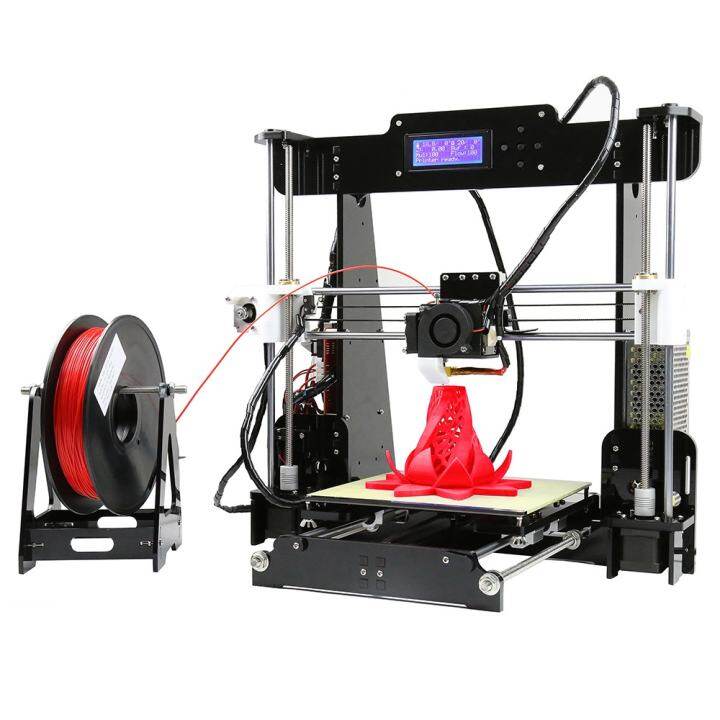 Creality Ender 3 V2 (Best Value)
Creality Ender 3 V2 (Best Value) - 2. Artillery Sidewinder X1 (Best Choice)
- 3. Dremel 3D45 (Almost Silent 3D Printer)
- 4. Monoprice Voxel (User Friendly)
- 5. Flashforge Finder (Best for Beginners)
- Conclusion
Best 3D Printers for flexible filament At A Glance
1. Creality Ender 3 V2 (Best Value)
2. Artillery Sidewinder X1 (Best Choice)
3. Dremel DigiLab 3D45 (Almost Silent 3D Printer)
4. Monoprice Voxel (User Friendly)
5. Flashforge Finder (Best for Beginners)
How to Make a 3D Printer Quiet?
Before we dive into the list, though, it’s important to review what actually makes a 3D printer quiet.
The single greatest cause of noise on a 3D printer is the stepper motors, which move components like the printhead around on the machine.
To make a 3D printer quieter, you can use higher-quality stepper motor drivers, which are electronic components on the motherboard that controls how a stepper motor turns.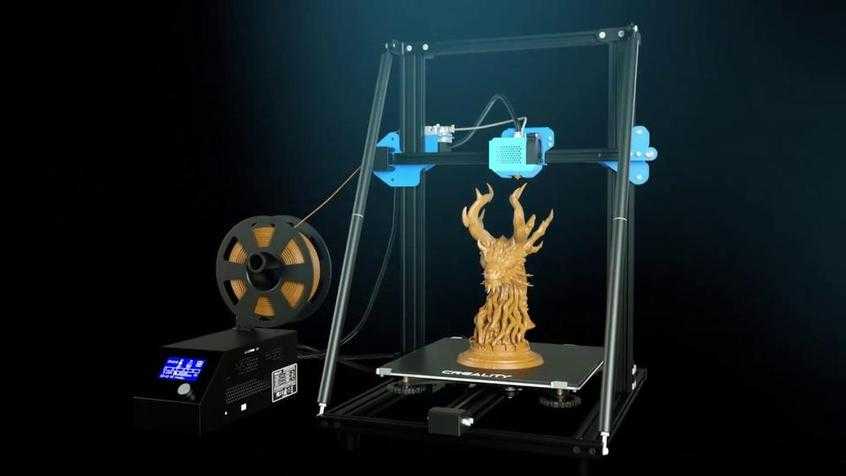
The higher the quality of the stepper motor drivers, the more precise the motor will be and the less noise it will make. TMC, the primary manufacturer of 3D printer stepper motors, ranks their available drivers with a four digit code in their name, such as “TMC2208” or “TMC2225”.
Typically, the higher the value of the four digits after “TMC” means the better the driver, so manufacturers and people who upgrade their printers use higher-ranked TMC drivers to make their printers quieter.
Check out our article on the best stepper motor drivers here for more info.
Another way manufacturers can make 3D printers more quiet is by using rubber feet, which are vibration-absorbent pegs that go on the base of the printer. These pegs help absorb any vibrations that run through the printer as well as prevent vibrations that are running through the table or stand where the printer is located from affecting the printer’s performance.
Besides these two main methods, there are also a handful of other ways that you can make a 3D printer more quiet.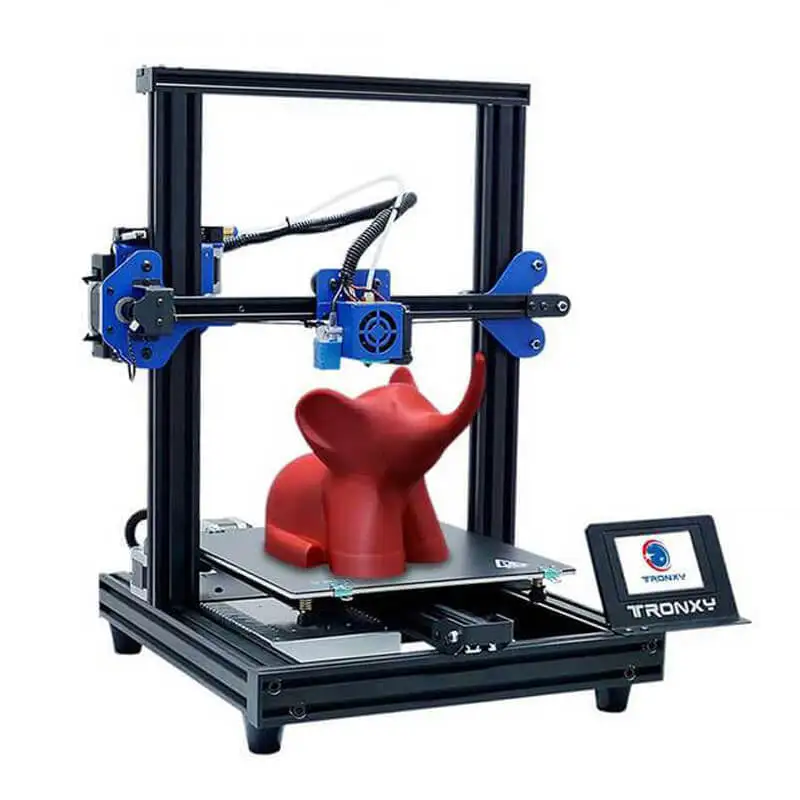
In general, anything that smooths motion or reduces/absorbs vibrations is a feature that will make your printer more quiet. For example, using smoother motion systems (e.g. linear rails over pulley wheels) and greasing any bearings can also reduce noise output.
What to Consider When Buying a 3D Printer?
Of course, when looking for the quietest 3D printer, the features that reduce the printer’s noise output are perhaps the most important. However, as the machine still needs to actually produce 3D models, you should still look at the other basic characteristics of the machine.
The first thing to consider when buying a 3D printer is its motion system. Different FDM 3D printers move their components around in different ways, which can affect part precision, the price of the machine, and a handful of other things. Today, most 3D printers are i3-style or standard Cartesian, but some have more unique motion systems like CoreXY or belt-driven, and they all have their own advantages and disadvantages.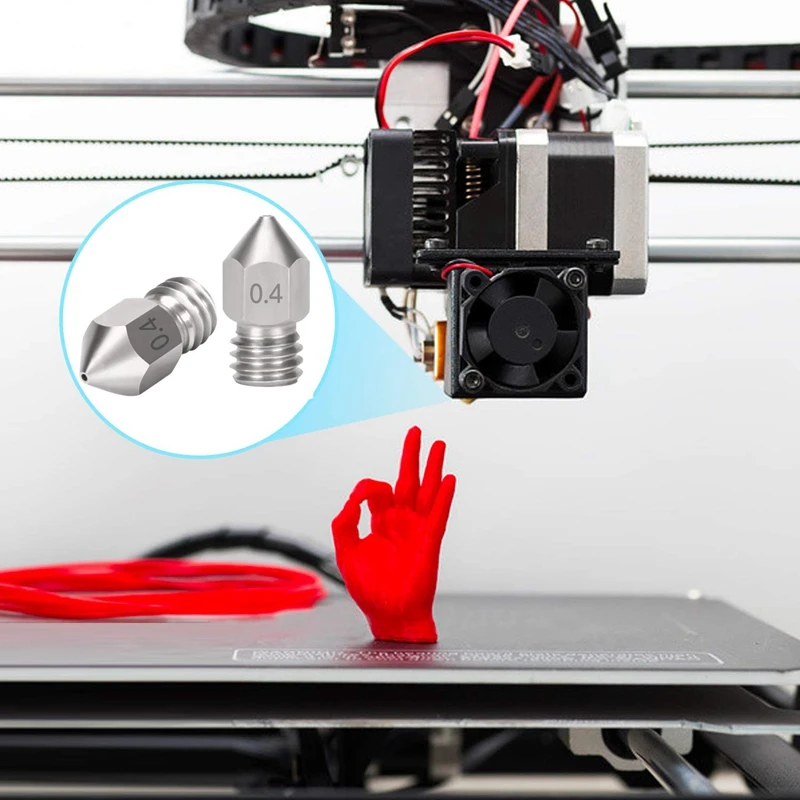
Secondly, you should consider the size of your printer. The build volume is the dimensions of the space that you can safely print 3D models on a printer. Depending on if you want to print large or small objects, you might want a different build volume. Check out our reviews of the smallest 3D printers here and the largest 3D printers here.
Third, don’t forget about the temperature capabilities of your machine. This is the main controller of what filament material you can use and is made up of the nozzle temperature and bed temperature.
Most 3D printers can reach the necessary temperatures for printing PLA, but if you want to print a higher-temperature material like PETG or ABS, make sure your printer can reach the required temperatures for the material.
Now that you know what to look for in a quiet 3D printer and a 3D printer in general, it’s time to get into the best quiet 3D printers!
3D Printer Type: FDM | Materials: PLA, TPU, PETG, ABS | Build Volume: 220 x 220 x 250 mm
First up, the Creality Ender 3 V2 is a popular machine developed by Creality, one of the most well-known manufacturers of consumer-grade 3D printers. The Ender 3 V2 is the second and upgraded version of Creality’s original Ender 3, which hit the consumer 3D printing market by storm when it was released in 2018.
The Ender 3 V2 is the second and upgraded version of Creality’s original Ender 3, which hit the consumer 3D printing market by storm when it was released in 2018.
The Ender 3 V2 has a ton of features that make it an overall great 3D printer and yield excellent 3D prints.
First off, the Ender 3 V2 has a mid-temperature hot end, capable of reaching 250 °C, which is suitable for most filament materials like PLA, PETG, TPU, and ABS.
The Ender 3 V2 also has a full-color LCD for easy operation, integrated belt tensioners for improving part precision, and a micro-SD card slot that allows for speedy firmware changes.
Source: Youtube Just Vlad
What makes the Ender 3 V2 a great quiet 3D printer, though, is its stock motherboard, which comes with integrated TMC2208 stepper motor drivers that make stepper motor movements very quiet. Additionally, Creality allows you to easily upgrade to their “silent” V4.2.7 board which has even-more-quiet TMC2225 drivers.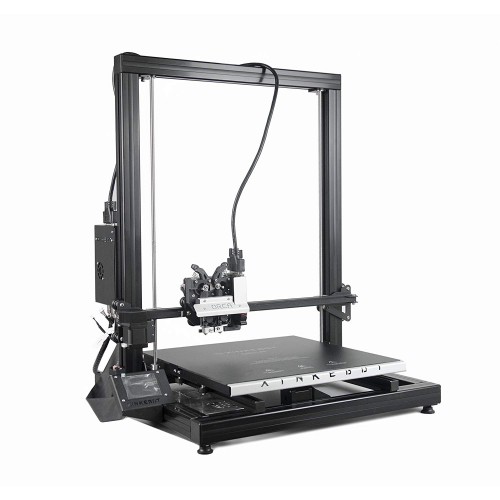
The Ender 3 V2 also has a decently-smooth motion system and built-in rubber feet to further reduce the noise level.
Many reviewers of the Ender 3 V2 state that you can hear it, but only a little bit, which is just fine considering the machine’s amazing printing performance and sub-$300 price point. It’s clear that the Ender 3 V2 is one of the best value printers you can get and it’s great for those on a budget who want a non-distracting printer or those who want to easily upgrade their machine.
- Low cost with a sub-$300 price tag
- Stock motherboard has very quiet TMC2208 stepper motor drivers
- Integrated belt tensioners
- Upgradable motherboard that lets you improve stepper motor drivers
- Built-in rubber feet
- Full-color LCD for easy operation
- Heated bed can’t reach viable temperatures for printing ABS
- LCD is not a touchscreen
- Fans have been known to be cheap and make a lot of noise
- Manual bed leveling
Get Discount (Official Store)
Check Latest Price
3D Printer Type: FDM | Materials: PLA, ABS, TPU | Build Volume: 300 x 300 x 400 mm
Second, the Artillery Sidewinder X1 is very similar to the Ender 3 in its i3-style construction, but it’s got a few differences that make it perform better in certain scenarios.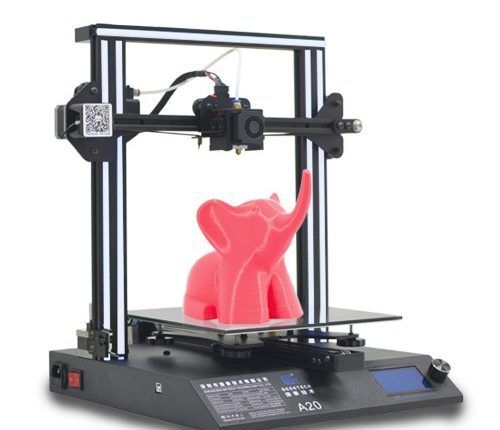
Most notably, the X1 has a direct drive extruder, meaning the extruder motor is placed directly above the hot end. This extruder configuration will yield higher-quality prints in flexible filaments, like TPU, and will cause less hot end jams in general.
Source: Youtube 3D Printing Nerd
The X1 might not have automatic bed leveling, but it features a full-color touchscreen interface that makes controlling the printer not only easy but also somewhat fun. The machine also has a usable print volume of 300 x 300 x 400 mm, which is large enough to print a wide variety of models like large trinkets and even some home decor models.
The printer stays quiet too through its motherboard which is rocking a set of TMC2100 drivers, rubber feet on the bottom of the machine, and its decently-quiet part cooling fans.
Many users point out that the X1 is virtually unnoticeable when it’s printing, making it well deserving of our “best choice” title. Overall, the X1 is a great option for those willing to spend a little more for a (almost) no-noise printing experience and those who want a decently-large printing space.
- TMC2100 stepper motor drivers which are very quiet
- Cooling fans are pretty quiet
- Large maximum printing dimensions
- Direct drive extruder for printing flexible filaments
- Full-color and touchscreen LCD for easy operation
- Manual bed leveling
- Direct drive extruder assembly is pretty large
- Mid-range price
Check Latest Price
3D Printer Type: FDM | Materials: PLA, ABS, PETG & Nylon |Build Volume: 254 x 152 x 170 mm
Third, the Dremel 3D45 is a 3D printer developed by Dremel, the popular manufacturer of machining tools like rotary devices.
The 3D45 costs a lot more than the other printers on this list, with a price tag close to $2,000, but it has a handful of features that might make it worth it for you. Most obviously, the 3D45 has an integrated enclosure, that should make printing sensitive materials like ABS a lot easier and yield higher-quality prints.
We believe the 3D45 is one of the most silent printers one can get because the enclosure will help block out the sound produced by the moving printhead. Additionally, many users have personal experiences of the Dremel 3D45 being very quiet.
Source: Youtube Adam Savage’s Tested
Unfortunately, the exact stepper motor drivers used on the printer’s motherboard are unknown because the manufacturer didn’t list the ones used.
The Dremel 3D45 has a lot of other usability and performance features too, such as its onboard camera that you can use to remotely monitor your prints to ensure they are going smoothly. The Dremel has a well-built and sturdy frame that should ensure pretty-smooth motion, not only improving the print quality but also potentially reducing the printer’s noise output.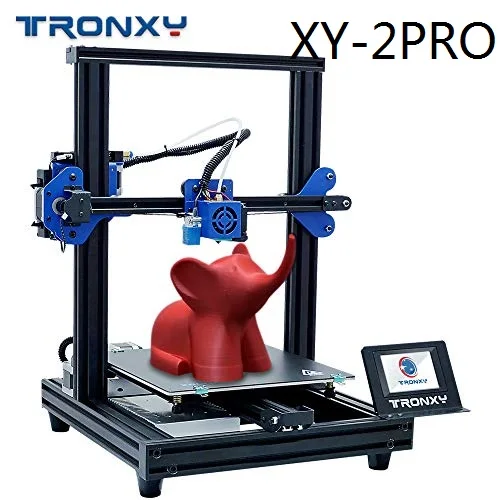
Lastly, the 3D45 has a very-adhesive build plate that should yield great first layers as well as a touchscreen LCD for easy machine operability.
At the end of the day, although the Dremel 3D45 has a hefty price tag, it’s equipped with a lot of features that improve quality-of-life, performance and make the printer easy to use. So, if you’re looking for quality in a very quiet printer and aren’t super concerned about the price, then the Dremel 3D45 is a great choice.
- Removable build plate that provides good first layer adhesion
- Built-in Wi-Fi capabilities
- Onboard camera for remotely monitoring your prints
- Touchscreen LCD for easy operation
- Integrated enclosure for printing ABS with a higher print quality
- Expensive
- Manual bed leveling required
- Stepper motor drivers unknown
Check Latest Price
3D Printer Type: FDM | Materials: PLA & ABS | Build Volume: 150 x 150 x 150 mm
Fourth, the Monoprice Voxel costs under $450 and is another printer with an integrated enclosure, but this feature is a lot rarer for machines in this price range.
The enclosure will insulate your print space to allow for printing sensitive materials like ABS and ASA with high print quality. The enclosure also helps reduce the machine’s noise output because the sound made by the printhead’s movement will be partially blocked by the machine’s acrylic enclosure panel.
Source: Youtube RoXolid Productions
The Voxel also has a full-color touchscreen interface where you can start and stop prints, control temperatures, and more. The ease-of-use of the interface makes the Voxel super user-friendly. The machine also has a Wi-Fi-enabled motherboard with a built-in camera positioned to face the print space, which allows you to remotely monitor your prints to keep your mind at rest while your Voxel is printing when you’re not there.
The printer also has a few other features too that are worth mentioning such as the assisted bed leveling system, quick-change nozzle mechanism, and magnetic removable build plate. All of these features further make the Monoprice Voxel a great option for those who want a smooth and easy printing experience while having a silent, but deadly 3D printer.
- Very smooth graphical user interface on a full-color touchscreen LCD for easy printer control
- Wi-Fi-enabled motherboard with an attached camera for remotely starting prints
- Quick-change nozzle mechanism for fast and easy nozzle swaps
- Removable build plate for quickly popping off prints and starting new ones
- Assisted bed leveling system for easier bed leveling
- Integrated enclosure for printing ABS in a high print quality
- Bed leveling is still manual
- Mid-range price
- Stepper motor drivers unknown
- Small print volume of 150 x 150 x 150 mm
Check Latest Price
3D Printer Type: FDM | Materials: PLA, PETG, Wood | Build Volume: 140 x 140 x 140 mm
Next, the Flashforge Finder was developed by Flashforge, a popular and reputable manufacturer of beginner-friendly 3D printers.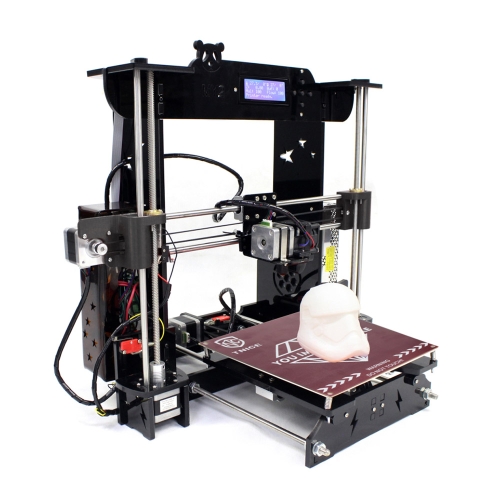
The Finder is an excellent machine for those new to 3D printing who want a quiet machine because it’s very simple to operate. Moreover, the Flashforge Finder has a pretty basic construction with a touchscreen LCD with a smooth graphical user interface so you can easily control your 3D printer and start prints.
What makes the Flashforge Finder particularly quiet is its use of conduit rails for the X/Y motion of the printhead. This motion style is pretty quiet and keeps vibrations to a minimum. The same is true for the Z-axis bed motion, which also runs on greased conduit rails for low noise output.
Source: Youtube Just Vlad
Unfortunately, the specific model of stepper motor drivers used on the Flashforge Finder isn’t known, but users state that the machine is pretty low-noise overall.
The printer also comes with some other great features that improve other aspects, such as its onboard Wi-Fi module that allows you to start prints remotely and the patented high-power extruder.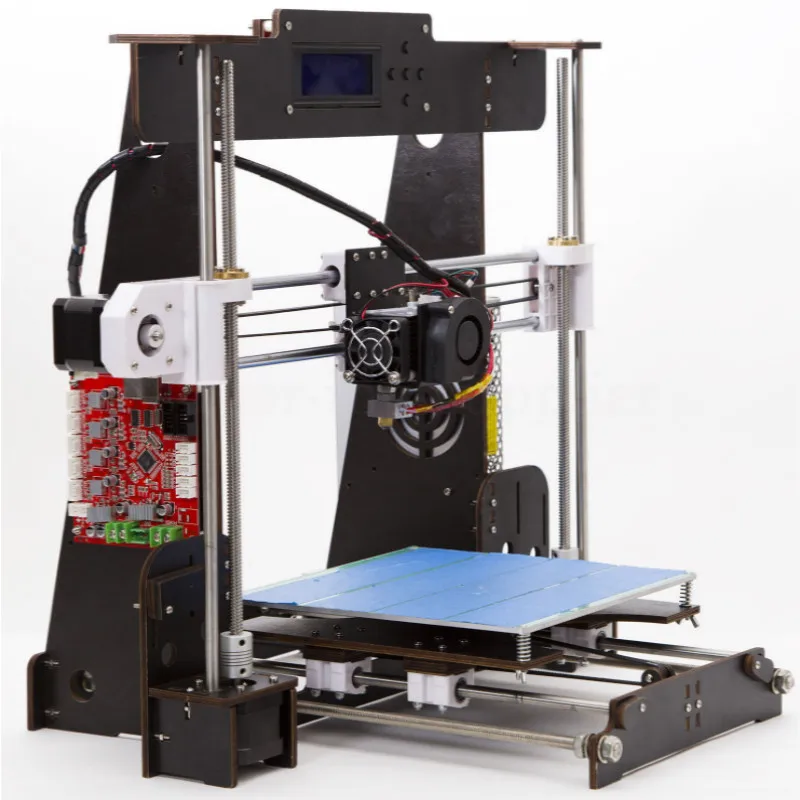
While the Flashforge Finder has a pretty small maximum print volume of 140 x 140 x 140 mm, it’s worth mentioning that the printer has an integrated filament spool holder that’s enclosed to prevent moisture from degrading the quality of your filament.
The Flashforge Finder costs under $400, which is very impressive considering how many ease-of-use features it comes with, like its full-color touchscreen LCD and Wi-Fi-enabled motherboard. Because of this, we suggest the Finder for beginners and those new to FDM 3D printing who want to achieve high-quality prints without much maintenance or tuning.
- Wi-Fi-enabled motherboard for remotely starting and stopping prints
- Prints models in a high print quality right out of the box
- Built-in enclosed filament spool holder for keeping moisture out
- Sturdy frame and use of conduit rails for smooth and silent motion
- Smooth and well-built graphical user interface on touchscreen and full-color LCD for easy operation
- Small print volume of 140 x 140 x 140 mm
- Mid-range price
- Stepper motor drivers aren’t TMC and aren’t known
- No onboard camera
Check Latest Price
Conclusion
As you probably can tell, you have a decent number of options when looking for the best quiet 3D printer. However, the different machines we discussed are best for different types of users and different purposes.
However, the different machines we discussed are best for different types of users and different purposes.
If you’re looking for the least expensive option, the Ender 3 V2 is probably the best option as it has the lowest price tag. The Ender 3 V2 is probably also the best option if you’re looking for the best value per dollar. However, on the other side of the spectrum, if you’re looking for the least noisy printer and don’t care how much it costs, the Dremel 3D45 is the one for you as it’s packed with features, is pretty quiet, and has an expensive price tag.
If you’re looking for a quiet printer that offers the highest print quality, you should check out the Artillery Sidewinder X1 because it had a good mix of noise-suppression features with performance and usability features and doesn’t break the bank.
Finally, if you’re looking for a printer that’s easy to work with, you should definitely make sure to check out the Monoprice Voxel as it has many features geared toward providing an easy printing experience.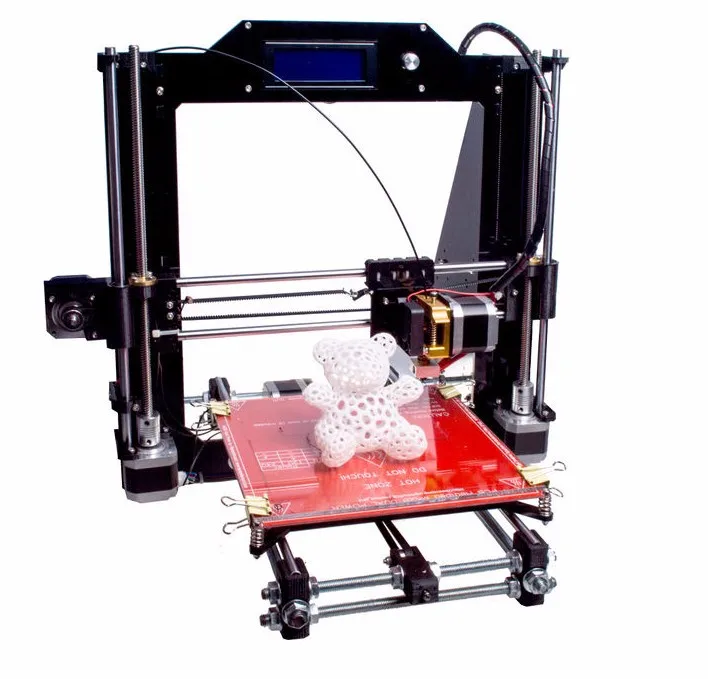 On a similar note, if you’re new to 3D printing and want a quiet printer that’s suited for your experience level, the Flashforge Finder is the one for you.
On a similar note, if you’re new to 3D printing and want a quiet printer that’s suited for your experience level, the Flashforge Finder is the one for you.
No matter what printer you choose, though, you should definitely have a fun…and quiet printing experience and we wish you luck along the way!
Making the 3d printer quieter without firmware and drivers
Technician
Hi all. My plywood printer was loud. Quite loud. Due to the fact that I am switching to printing with Eco-materials, it is possible to be in the printing area of the printer without toxic effects on the body. Only the noise from the printer drove me crazy even when idle (the fans were terribly noisy). Plan:
- reduce the noise of the fans
- put dampers under the printer
Fans
All my fans were terribly buzzing. Strongest on the extruder. My technique was as follows:
- We take an old fan
- We test it with a laboratory power supply for the lowest speed
- If there is extraneous chirring other than air flow - to release.
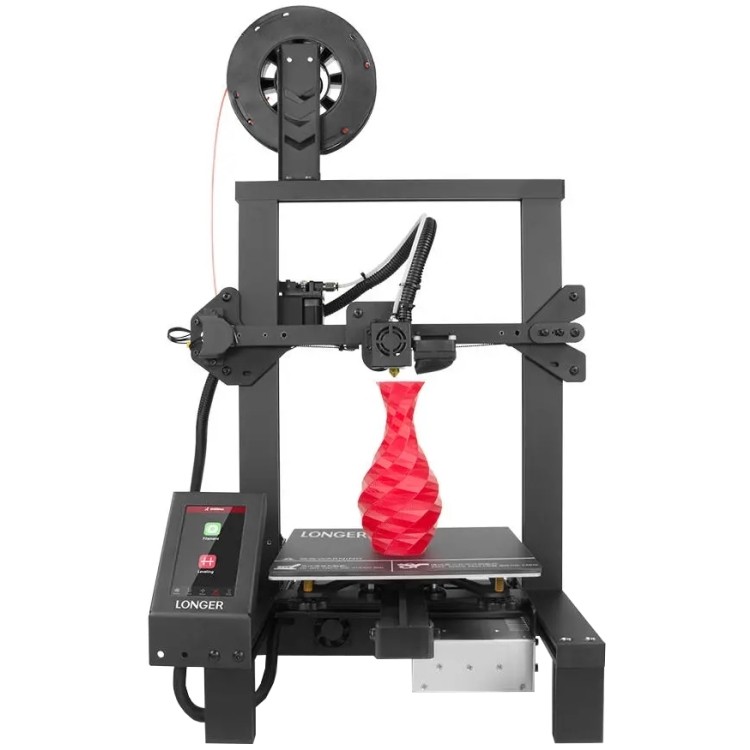 If weak/medium - then marked on it 'noisy' and the urn did without a fan (for future homemade products without criticality to the sound).
If weak/medium - then marked on it 'noisy' and the urn did without a fan (for future homemade products without criticality to the sound).
Let's analyze everything using the example of a printer power supply fan.
I measured the noise with a good voice recorder. A phone will do. We must understand 'what happened'?
After inspection, I decided to put the fan (conditionally new 70mm) exactly in the center to blow air. The transformer will divide into 2 streams, which will fly out into the holes at the terminal.
On a laboratory PSU, a voltage was selected at which the air flow is not lower than it was with a stock fan, but the sound is not too much. To adjust the voltage, I bought step-down DC-DC converters (10pcs / $ 6.5)
After we make holes for blowing with scissors for metal.
I attached the fan with 2 Noctua dampers and double-sided foam tape.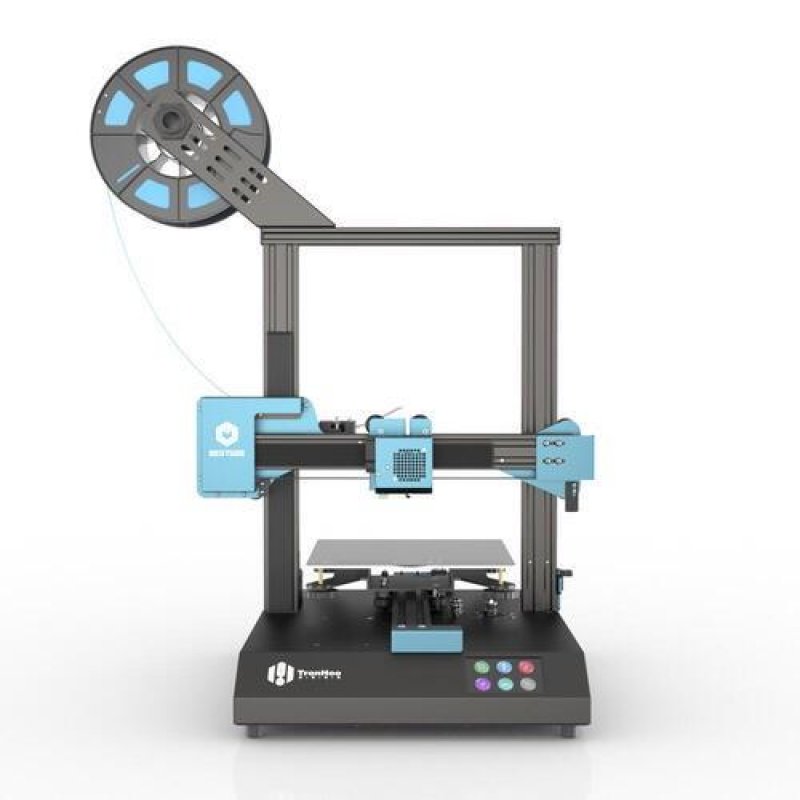 Next, of course, we remove the noise after the alterations.
Next, of course, we remove the noise after the alterations.
Visual noise before and after:
Who wants to listen - the difference is impressive. Then we mount everything back, start printing. We are testing so that everything works, and the radiators (in my case, these are the side walls of the PSU) were lower than the temperature at which it hurts to hold the hand (this is 60 degrees).
I switched the extruder to a 40mm fan and cut the voltage a little. For the control board (Arduino + drivers), similar to the power supply - about 70mm fan at low speeds.
Dampers
When I messed around with casting polyurethane, I made a lot of different things for future dampers / wheels.
I added printed tops for attaching to plywood to them and we get:
Installation:
After the tests, I noticed that the dampers almost do not deform when printed, respectively, they do not extinguish anything.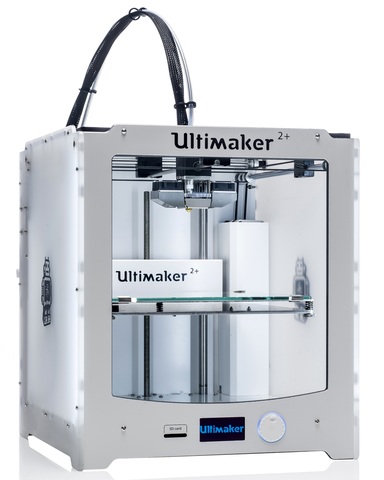 Then some scissors and we get:
Then some scissors and we get:
I tested with and without dampers. When printing, the difference is about zero in my case, because. mechanical sounds override any vibration.
Total
Graphically, the difference during printer operation (before / after) is not very visible
But if you listen, it was the annoying noise from the fan that almost completely disappeared.
The next step, as I understand it, is to interfere with the firmware / drivers / work with the mechanics. I don’t want to do any of this, the goal of a more comfortable stay with an assistant has been achieved.
Follow author
Follow
Don't want
17
More interesting articles
48
Subscribe to the author
Subscribe
Don't want
Hi all.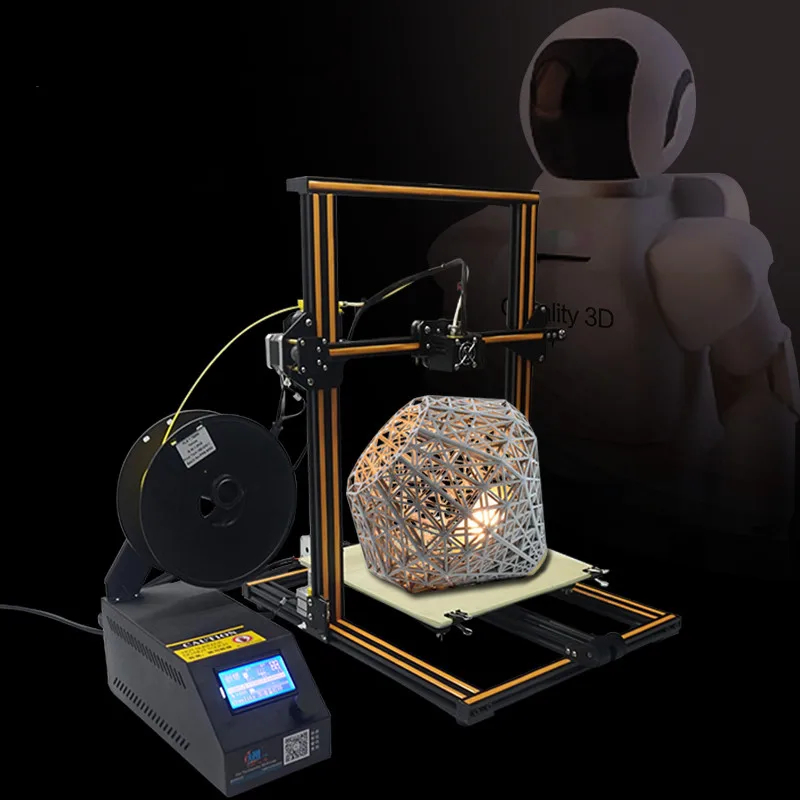 This resource has helped me a lot. It's time to say thank you.
This resource has helped me a lot. It's time to say thank you.
NOT seen...
Read more
chak198
Loading
25.10.2022
491
four
Subscribe to the author
Subscribe
Don't want
Good day, dear colleagues! Today we will make the correct connection of LARGE (or not very...
Read more
255
Subscribe to the author
Subscribe
Don't want
Snot. Who hasn't encountered them?
How many times this question has been raised. How many topics...
Read more
a selection of CoreXY and H-Bot cube models / Collections of products from Aliexpress and more / iXBT Live
How to make the right choice of a 3D printer and not regret it? What would the purchase not be spontaneous, but deliberate and justified? No need to scatter money by buying the cheapest options from aliexpress.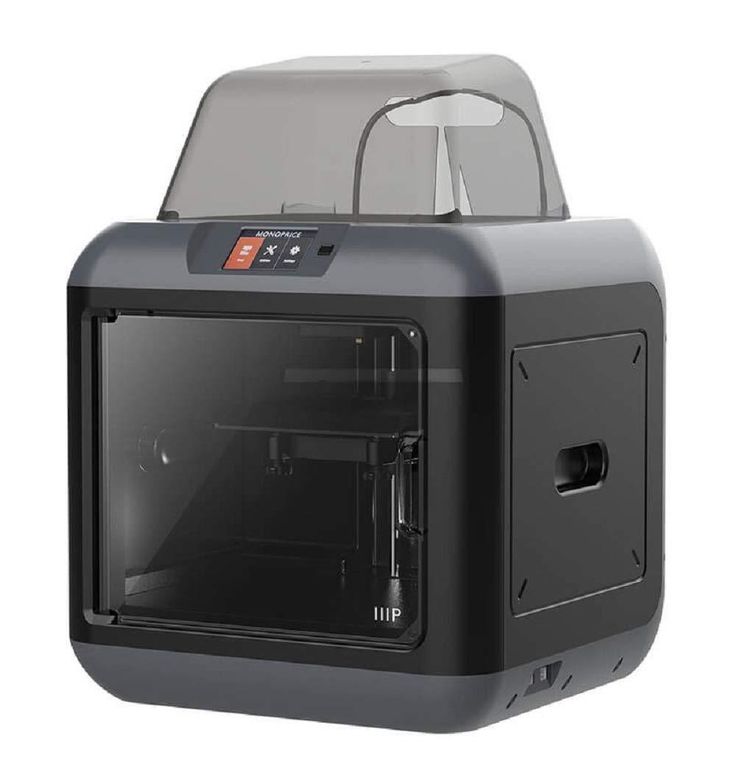 As a rule, stores offer outdated, poorly selling items, for which cunning sellers slightly drop prices. Choose carefully, as it's better to pay a little extra but get a hassle-free rigid frame printer. A good choice would be models in the form of a "cube" with kinematics such as H-Bot or CoreXY. The printer can be made of stamped steel or profile. Modern models come already partially assembled and configured, it is enough to assemble a part of the frame and connect the electronics, then perform the alignment procedure. When choosing, pay attention not only to the size of the printable area, but also to the type of extruder (Bowden / Direct), the type of guides (rails / shafts), as well as additional equipment: titanium nozzles, touch displays, Wi-Fi connection, etc. d. A quality 3D printer must be tough! 9Flyingbear Ghost 5 3D Printer , as well as silent TMC drivers in the database. The touch screen is used for control from the panel. The printer is in stock in the Russian Federation ("Express Delivery").
As a rule, stores offer outdated, poorly selling items, for which cunning sellers slightly drop prices. Choose carefully, as it's better to pay a little extra but get a hassle-free rigid frame printer. A good choice would be models in the form of a "cube" with kinematics such as H-Bot or CoreXY. The printer can be made of stamped steel or profile. Modern models come already partially assembled and configured, it is enough to assemble a part of the frame and connect the electronics, then perform the alignment procedure. When choosing, pay attention not only to the size of the printable area, but also to the type of extruder (Bowden / Direct), the type of guides (rails / shafts), as well as additional equipment: titanium nozzles, touch displays, Wi-Fi connection, etc. d. A quality 3D printer must be tough! 9Flyingbear Ghost 5 3D Printer , as well as silent TMC drivers in the database. The touch screen is used for control from the panel. The printer is in stock in the Russian Federation ("Express Delivery").
Features:
- Table size: 255 x 210 mm
- Print Height: 200mm
- Extruder Type: Bowden
- Features: Partially Enclosed Chamber, Touch Screen, Wi-Fi, Silent Drivers TMC2208/TMC2225
Buy Flashforge Adventurer 3 3D Printer
Official Flashforge
One of the most advanced printers, the Flashforge Adventurer 3 factory assembled model. Comes ready to go. Wi-Fi can be used to connect from a smartphone or tablet. FlashCloud cloud service is provided for remote control of printing. It is easy to maintain the printer - the nozzle is easily replaced, there are breakage and end of filament sensors.
Specifications:
- Table size: 150 x 150 mm
- Print height: 150 mm
- Extruder type: bowden
- Features: alignment, Wi-Fi, built-in surveillance camera, quiet drivers, removable nozzle -printer ANYCUBIC 4Max Pro
- Table size: 270 x 210 mm
- Print height: 190 mm
- Extruder type: bowden
- Features: alignment, closed working chamber, touch screen.
- Table size: 300 x 300 mm
- Print height: 350 mm
- Extruder type: Bowden
- Features: alignment, Press resumption, touch screen
- Table size: 330 x 330 mm / 400 x 400 mm / 500 x 500 mm
- Print height: 400 mm / 600 mm
- Extruder type: Bowden
- rail, titanium extruder
- Table size: 220 x 220 mm / 300 x 300 mm
- Print height: 220 mm / 330 mm
- Extruder type: Bowden
- Features: alignment, touch screen, quiet drivers TMC22225
- Table size: 270 x 200 mm
- Print height: 200 mm
- Extruder type: direct/bowden
- Features: touch screen, leveling, Wi-Fi, enclosed oven
- Table size: 300 x 300 mm
- Print height: 400 mm
- Extruder type: Bowden, Mix 4-in-1, color mixing
- Features: touch screen, 32bit board, TMC drivers , Alignment Sensor, Filament Sensor, Print Resume
Buy at the store ANYCUBIC
ANYCUBIC offers a simple and convenient option for a 3D printer.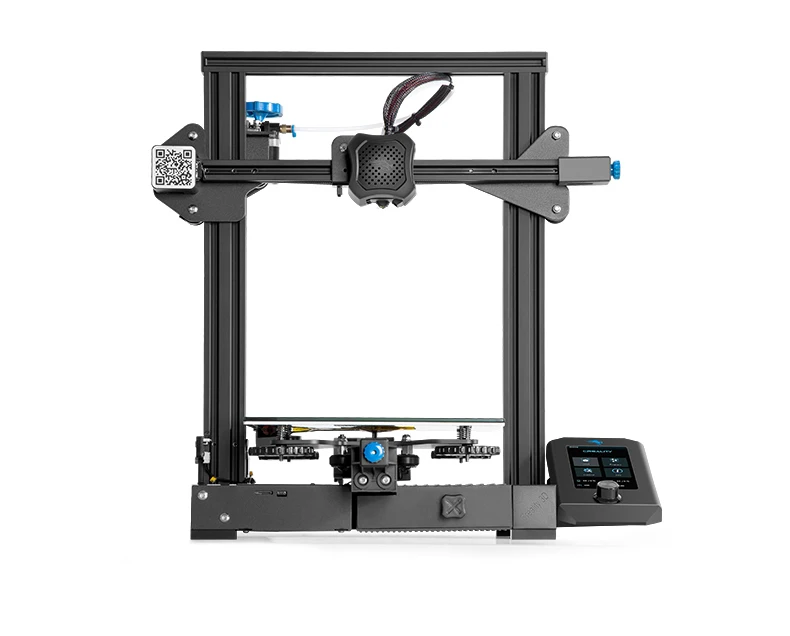 Model 4Max Pro comes with a closed chamber, that is, the print area is protected from drafts. This option will be convenient both for home and hobby, and for the office and small runs of models. The display is touch-sensitive, a printer calibration system is provided.
Model 4Max Pro comes with a closed chamber, that is, the print area is protected from drafts. This option will be convenient both for home and hobby, and for the office and small runs of models. The display is touch-sensitive, a printer calibration system is provided.
Characteristics:
Creativity Elf 3D Printer
Buy from Creativity Official
A large 3D printer in the form of a structural profile cube from Creativity. The Elf model is equipped with two vertical drives at once, a calibration system, a touch screen, and is also easy to assemble and prepare for work. The printer comes partially assembled - the base and electronics are assembled, you just need to assemble the top of the cube and level the table before the first print.
Characteristics:
3D printer Creality Ender
Buy 3D printer CREALITY Ender-5 Pro
CREALITY is known not only for its popular 3D printer Ender-3, which has long become a "folk" model, but also for the development of the model into the "cube" Ender-5.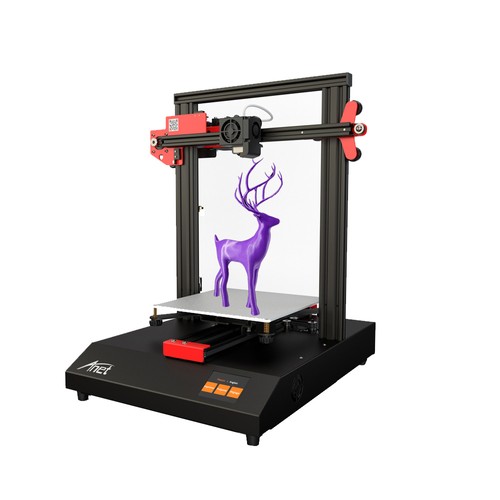 I note the presence of models Ender-5 Pro (advanced) and Ender-5 Plus (with an increased size of the print area). The printer is quick to assemble, table leveling is provided, and quiet TMC drivers are installed. 9Ol000 Tronxy Official
I note the presence of models Ender-5 Pro (advanced) and Ender-5 Plus (with an increased size of the print area). The printer is quick to assemble, table leveling is provided, and quiet TMC drivers are installed. 9Ol000 Tronxy Official
One of the most recognizable and popular models from TRONXY. These are TRONXY X5 series 3D printers, or rather several available modifications at once. We are talking about X5SA PRO with dimensions from 330x330x400 mm to 500x500x600 mm. I note the rich package: 32 bit control board, linear guides (rails), as well as a titanium hotend in the base.
Features:
Twotrees 3D printers
Buy Twotrees SP-5 3D printer Buy Twotrees SP-3 3D printer
Quite thoughtful series of "cubes" from Twotrees. These are SP-5 (larger) and SP-3 (smaller) 3D printers based on a pre-assembled base and a rigid structural profile frame.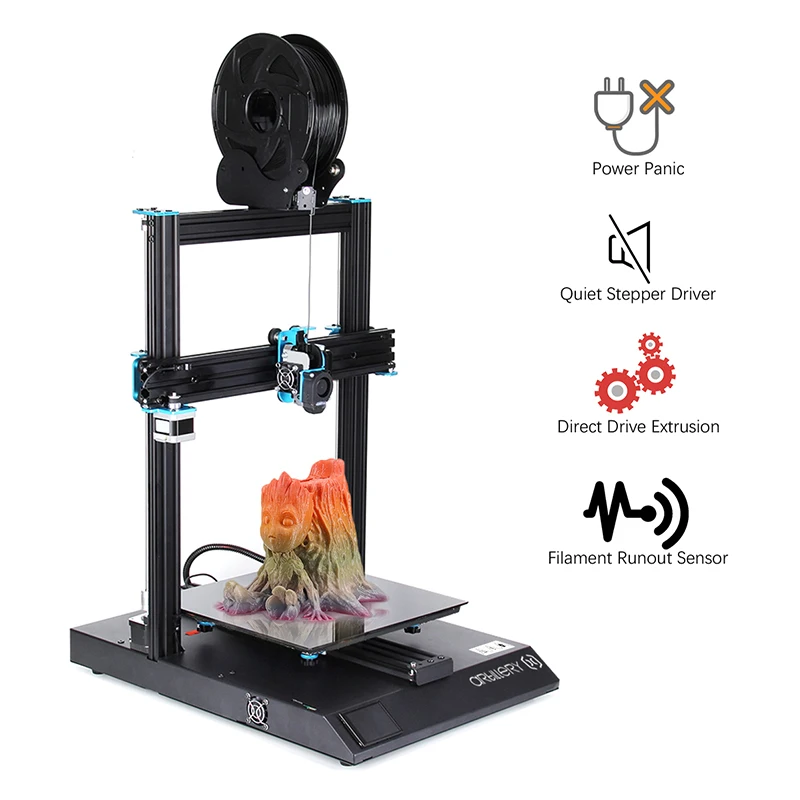 The Twotrees SP-5 model is interesting due to its dual vertical drive (Dual Z Axis) as well as quiet TMC-based drivers.
The Twotrees SP-5 model is interesting due to its dual vertical drive (Dual Z Axis) as well as quiet TMC-based drivers.
Characteristics:
000400040004 3D printer QIDI
Buy in the official store QIDI TECHNOLOGY
Serious 3D printer from QIDI TECHNOLOGY. The QIDI TECH X-PLUS model is equipped not only with a touch screen and a draft-free camera, but also has a Wi-Fi wireless access module. The kit includes two extruders - the main (Bowden) and replaceable (Direct) for printing with various materials. The coil can be placed both outside and inside the printer body.
Specifications:
Buy at ZONESTAR Official
A rather interesting model of a large ZONESTAR Z9V5Pro 3D printer, a distinctive feature of which is 4 installed extruders for color mixing at once.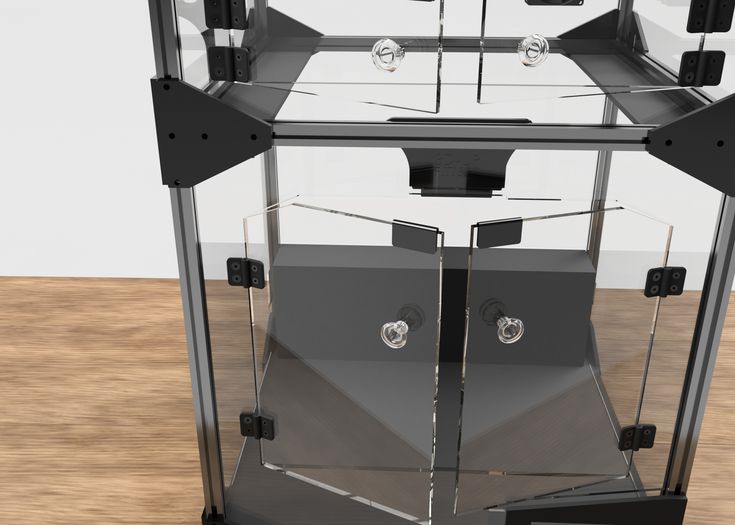 The software allows not only to alternate the colors of the filaments, but also to mix with a gradient. An interesting option for crafts and souvenirs.
The software allows not only to alternate the colors of the filaments, but also to mix with a gradient. An interesting option for crafts and souvenirs.
Specifications:
Add selected options to cart, compare. If you have decided and there is availability in the local warehouse (“Express Delivery”), then you can immediately proceed to checkout. If you have chosen, but hesitate - wait for the next sale. The price will change in the basket and it will be possible to buy the desired model at a reduced price. From December 6, 2021, you can additionally apply discount promotional codes: NEWYEAR1000 (1000/11000 rubles), NEWYEAR1300 (1300/15000 rubles) or NEWYEAR1700 (1700/20000 rubles).
Other reviews and tests of smartphones, tools and gadgets you can find in my profile and links below.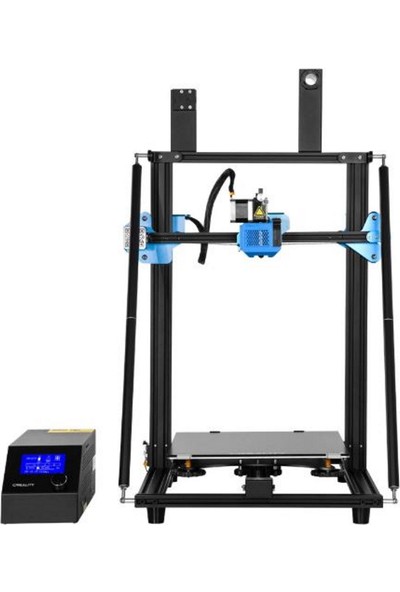
Thank you for your attention!
News
Publications
Do you think the password on your smartphone guarantees the safety of your data and money? And here it is not. And, if you didn't protect your SIM card with a PIN code, then if you lose your phone, you can lose everything. And so...
No, Google is not replacing its human employees with artiodactyls. However, it's time to update the skills section on your resume: if you can stand for hours, love animals, and can...
This time I got my hands on a budget TV Box Hiper Media ATV 8K. This is a very compact device designed to play both online and offline content. Thanks to HDMI...
An international airport in the middle of five-thousander mountains, at an altitude of 2244 m, where landing is only allowed during daylight hours and with a limited number of pilots - hmm, sounds dangerous. So it is...
Today I want to show you some compact chest bags that are convenient to use in an urban environment for everyday life.